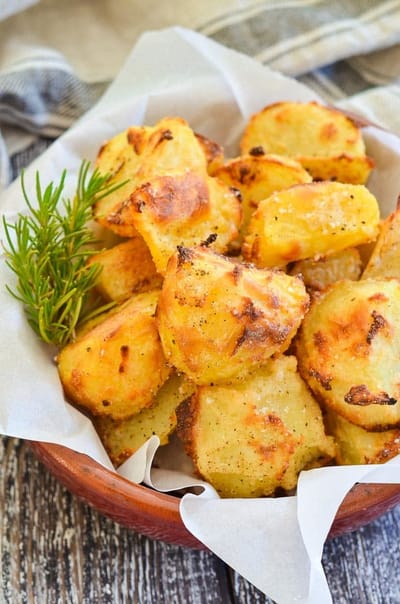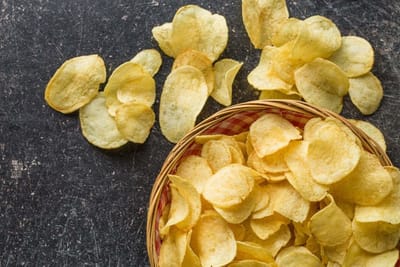Future Concept/Innovation


(Poblem Solution)
Hook Shark Tank Pitch (Central Idea!): Best said by Herman Lays' advertising company, when it comes to potato chips... "Betcha can't eat just one!" The problem with this is, even though chips are undeniably delicious, they aren't exactly healthy, and consuming large amounts of the salty product can wreak havoc on our bodies and our health.
Because of this, I, Bailee Brown, have decided to invent a potato chip that's less harmful than the traditional snack so we can take our second, third, and 24th chip without worrying about our caloric intake.
Description (from question 2): In 2050, I hope to make 0 calorie chips available. Beginning in 2030 I plan on working with scientists to create a substance that is like a potato but without the negative parts of being a carbohydrate. I think the best way to keep the calories out would also be to air fry the substances so that they keep the potato chip shape and texture, but don’t have the negative cholesterol that normal deep frying would give. Once I get the correct texture and look, then I can experiment with flavorings and seasonings that have the least amount of calories. Hopefully by 2040, we can start introducing new flavors of our healthier potato chips.
Production (from question 4): I plan on using some of the lays factories that are already in production to introduce my concept. These factories are located throughout the US and use potatoes mostly grown in Canada. The largest one is a manufacturing facility in Casa Grande, Arizona, that turns about 500,000 potatoes into potato chips every day. https://www.foodprocessing-technology.com/projects/pepsico-frito-lay/ I hope to allow anyone who needs a job to work at these factories and to have no requirements when it comes to my employees. They will be paid a fair wage, have contracts, and paid holidays with rotating schedules so the chips can remain in production. The biggest potential issue I can expect from our experimentation is about the actual material of the potato chip and how to design a new substance that still has the same crispy, crunchy texture.
Distribution (from question 5): With drones, one way Frito-Lay can cut out gas mileage by shipping their products to stores from their warehouses without using trucks and fossil fuels. With the use of drones, fewer storage facilities will be needed because traffic and transportation logistics will be a non-issue when the products can fly over traffic. When it comes to customer interaction, Frito-Lay will continue to sell their products in stores, however, with drones Frito-Lay will be able to deliver your tasty snacks right to your front door. Most grocery stores and gas station carry a wide range of Frito Lay products. One drawback to this shipping/delivery method is that drones aren’t large and won’t be able to carry as many different flavors of chips that you might find in a store, so the strategically placed warehouses will still need to be used.
Capital (from question 6): In regards to supplies, I will choose to use potatoes that were grown in the US rather than Canada, and have outlined future distribution methods above. Frito Lay is a part of the larger company PepsiCo. They are publicly traded, and will continue to be publicly traded as I prepare my innovation. This will allow the general public and anyone who owns stocks in the company to continue to receive profits from those investments.
Consumption (from question 7): I want everyone of all age groups to be a market for potato chips as they’ll be 0 calorie, so health conscious adults won’t have to worry about their health as much. They’ll also still be affordable so people of different groups will be able to purchase them. I will continue to continue to allow several brands of chips to be made as it creates a better market for price comparisons. If every company merged into one, then one company could decide the prices for all the chips which wouldn’t be fair. My personal brand will be called LowCal (like SoCal). I will be a smaller company owned by Lays (FritoLay) so I can use all their factories and distribution trucks and methods to produce the most chips as possible.
In terms of advertising, I’d begin by giving all the Amazon Alexas and google homes ads to read in the middle of people talking about chips. I’d also tap into the smart tv’s and whatever other smart equipment there is to show slideshow picture of my potato chips so I can start planting the idea in people’s minds. Then I’d infiltrate all the advertising systems for local grocery stores and gas stations. This is a solution to the issue of advertising to people who aren't on the internet (by still having ads in stores) and for people who don't leave their houses (by having ads in the AI gadgets in their homes.)
When it comes to pricing, unfortunately, the price for my potato chips will have to go up because of the science involved in making them. It won’t be as simple as cutting potatoes and deep frying them, and I will have to use lasers to make them to avoid the fat and calories of frying in oil. I estimate that the chips will cost around $6 - $10 a bag due to the production costs and trying to use ethical labor. (it’d be cheaper if I chose to have the factories in China but I want to source work locally and pay fair wages.) I'm hoping that as science continues developing new food - related ideas, the new materials will become more readily available and won't cost as much.
Hook Shark Tank Pitch (Central Idea!): Best said by Herman Lays' advertising company, when it comes to potato chips... "Betcha can't eat just one!" The problem with this is, even though chips are undeniably delicious, they aren't exactly healthy, and consuming large amounts of the salty product can wreak havoc on our bodies and our health.
Because of this, I, Bailee Brown, have decided to invent a potato chip that's less harmful than the traditional snack so we can take our second, third, and 24th chip without worrying about our caloric intake.
Description (from question 2): In 2050, I hope to make 0 calorie chips available. Beginning in 2030 I plan on working with scientists to create a substance that is like a potato but without the negative parts of being a carbohydrate. I think the best way to keep the calories out would also be to air fry the substances so that they keep the potato chip shape and texture, but don’t have the negative cholesterol that normal deep frying would give. Once I get the correct texture and look, then I can experiment with flavorings and seasonings that have the least amount of calories. Hopefully by 2040, we can start introducing new flavors of our healthier potato chips.
Production (from question 4): I plan on using some of the lays factories that are already in production to introduce my concept. These factories are located throughout the US and use potatoes mostly grown in Canada. The largest one is a manufacturing facility in Casa Grande, Arizona, that turns about 500,000 potatoes into potato chips every day. https://www.foodprocessing-technology.com/projects/pepsico-frito-lay/ I hope to allow anyone who needs a job to work at these factories and to have no requirements when it comes to my employees. They will be paid a fair wage, have contracts, and paid holidays with rotating schedules so the chips can remain in production. The biggest potential issue I can expect from our experimentation is about the actual material of the potato chip and how to design a new substance that still has the same crispy, crunchy texture.
Distribution (from question 5): With drones, one way Frito-Lay can cut out gas mileage by shipping their products to stores from their warehouses without using trucks and fossil fuels. With the use of drones, fewer storage facilities will be needed because traffic and transportation logistics will be a non-issue when the products can fly over traffic. When it comes to customer interaction, Frito-Lay will continue to sell their products in stores, however, with drones Frito-Lay will be able to deliver your tasty snacks right to your front door. Most grocery stores and gas station carry a wide range of Frito Lay products. One drawback to this shipping/delivery method is that drones aren’t large and won’t be able to carry as many different flavors of chips that you might find in a store, so the strategically placed warehouses will still need to be used.
Capital (from question 6): In regards to supplies, I will choose to use potatoes that were grown in the US rather than Canada, and have outlined future distribution methods above. Frito Lay is a part of the larger company PepsiCo. They are publicly traded, and will continue to be publicly traded as I prepare my innovation. This will allow the general public and anyone who owns stocks in the company to continue to receive profits from those investments.
Consumption (from question 7): I want everyone of all age groups to be a market for potato chips as they’ll be 0 calorie, so health conscious adults won’t have to worry about their health as much. They’ll also still be affordable so people of different groups will be able to purchase them. I will continue to continue to allow several brands of chips to be made as it creates a better market for price comparisons. If every company merged into one, then one company could decide the prices for all the chips which wouldn’t be fair. My personal brand will be called LowCal (like SoCal). I will be a smaller company owned by Lays (FritoLay) so I can use all their factories and distribution trucks and methods to produce the most chips as possible.
In terms of advertising, I’d begin by giving all the Amazon Alexas and google homes ads to read in the middle of people talking about chips. I’d also tap into the smart tv’s and whatever other smart equipment there is to show slideshow picture of my potato chips so I can start planting the idea in people’s minds. Then I’d infiltrate all the advertising systems for local grocery stores and gas stations. This is a solution to the issue of advertising to people who aren't on the internet (by still having ads in stores) and for people who don't leave their houses (by having ads in the AI gadgets in their homes.)
When it comes to pricing, unfortunately, the price for my potato chips will have to go up because of the science involved in making them. It won’t be as simple as cutting potatoes and deep frying them, and I will have to use lasers to make them to avoid the fat and calories of frying in oil. I estimate that the chips will cost around $6 - $10 a bag due to the production costs and trying to use ethical labor. (it’d be cheaper if I chose to have the factories in China but I want to source work locally and pay fair wages.) I'm hoping that as science continues developing new food - related ideas, the new materials will become more readily available and won't cost as much.
